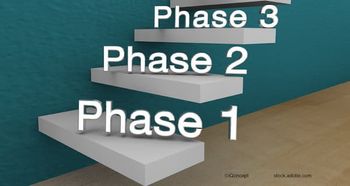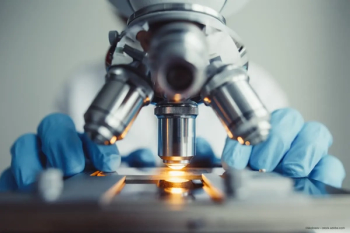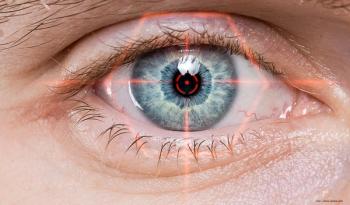
Angiogenesis 2025: The global forecast for AI-driven home OCT
Professor Anat Loewenstein, MD, speaks about her presentation from the 22nd Annual Angiogenesis, Exudation, and Degeneration Meeting
Following the 22nd Annual Angiogenesis, Exudation, and Degeneration Meeting, held virtually on February 8, 2025, Anat Loewenstein, MD, shared key takeaways from her presentation. Prof Loewenstein is Professor and Head of Retina, Division of Ophthalmology at Tel Aviv Medical Center, Sydney Fox Chair of Ophthalmology at Tel Aviv University, and President of the Israeli Ophthalmological Society, all in Tel Aviv, Israel. She also serves as the President of the European Society of Retina Specialists (EURETINA).
Prof Loewenstein presenting findings from a cross-sectional pivotal home optical coherence tomography (OCT) trial that compared the performance of artificial intelligence (AI)-enabled algorithms with human expert graders in neovascular age-related macular degeneration (nAMD).Overall, the study demonstrated that combining home OCT with AI provides a high level of precision and repeatability, enhancing patient care and disease monitoring for AMD. Here, Prof Loewenstein shares her findings and discusses the broader implications for home OCT in the years to come.
Editor's note: The below transcript has been lightly edited for clarity.
Sheryl Stevenson: So we are joined today by Professor Anat Loewenstein. Welcome to you, always a pleasure to see you. We would just love to hear a little bit of a summary of your talk at this year's Angiogenesis meeting. You spoke about a home OCT trial.
Anat Loewenstein, MD: Thank you very much, Sheryl, it's always a pleasure to talk with you. The Angiogenesis Virtual Meeting was an amazing meeting. I think it practically discussed everything that is relevant in the field of retinal disease from well known experts and I learned a lot.
For my talk, the topic was the pivotal home OCT trial to compare the performance of AI-enabled algorithms with human graders in neovascular macular degeneration. And this is actually one of the two pivotal trials that led to FDA clearance of the [Notal Vision Home OCT device SCANLY]. The presentation described how to clear AI algorithms for OCT systems and discussed the implication of its performance on the clinical management.
We've already shown that home OCT and in-office OCT are comparable in identifying hyperreflective spaces. And also, we've already shown the patients are able to acquire the images on a regular basis. The challenge still is how to manage this large volume of data which is created by the home OCT. And the goal of this presentation was to study the performance of AI with the Home OCT and to understand its impact on the management of our patients.
So for the study, patients acquired four scans on two home OCT devices. All scans were processed with the AI-based algorithm for the hyperreflective areas, segmentation and also volume estimation. In the 10% of the B scans of home OCT were annotated by three expert graders. In addition, the patients acquired one scan on an in-office OCT, and that was again annotated by three expert graders. And all the patients had neovascular macular degeneration.
We looked at two outcomes: One, repeatability, which is a measure of precision, saying looking at the similarity of...estimate for the same eye with multiple scans and grading experts, and at agreement, which is the similarity in segmentation by AI and graders, which is measured by the Dice similarity score.
When we look at the results, when we look at the repeatability, the results are very good. The coefficient of variation was 11.1% on the home OCT and 16% for the in-office OCT. This is when you examine eyes that have a pretty large amount of fluid of at least 10 volume units. So the results show good precision for both device grader combinations on home OCT and AI. It's more repeatable than in-office OCT and the grader. We also looked at agreement. And here we showed excellent agreement in terms of volume estimation with an AI grader Dice score on par with those in between two human graders. So the comparison is very similar. So you know, we do think that combining the home OCT with AI gives physicians insights that have never been before into the disease dynamic, showing the estimation the AI estimation of the hyperreflective spaces, or projection map, and longitudinal, total retinal hyperreflective spaces, volume trajectory, and the ability to set the thresholds to get notification.
So for now, it's going to be commercialised only in the United States, because of the size. To operate the home OCT, you need a monitoring centre. It's not a device that you go and buy in the supermarket, that you can go and give everyone. You need, a monitoring centre that actually supplies the device and monitors the compliance, and the fact that there is an alert, and the fact that patient is, attentive to the alert. And for now, itwill be applicable in the United States, after establishing the reimbursement levels, and then other big countries.
Everyone is looking at biomarkers. Home OCT is very good at detecting fluid, very small levels of fluid. But there are many other things that it's not it's not proficient at detecting. So I think it's mainly [used for detecting fluids]. And of course, it's also important in diabetes and other diseases, but not as [much as] it is important in macular degeneration, where time is of the essence.
Newsletter
Get the essential updates shaping the future of pharma manufacturing and compliance—subscribe today to Pharmaceutical Technology and never miss a breakthrough.










































